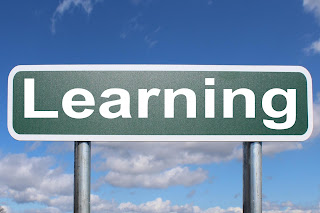Above is a video of Stephen Wolfram discussing ChatGPT. He talks in great length about how ChatGPT works. This is an informative video that gives the “soup to nuts” view of ChatGPT.
To understand how chat GPT works, one must understand the concept of a neural network. I read a book that was published in 2009 on neural networks and the title was “Wired for Thought: How the Brain is Shaping the Future of the Internet” by Jeffrey Stibel. This was the first book to expose me to the idea that both computer networks and brains are similar in how they function. Stibel goes on to argue that both systems, the brain, and the Internet, operate based on the principles of networking, feedback, and scalability. He goes on to say that the way the brain rewires itself is very much like the way the Internet handles digital congestion by rerouting traffic to less congested areas of the Internet.
What is a neural network? Imagine you have a big puzzle to solve, and you have a bunch of friends who can help. Each friend is good at solving one part of the puzzle, and together they can figure out the whole thing.
In the brain, a neural network is like that - it is a group of little helpers (called neurons) that work together to solve a problem. Each neuron takes in some information, does some thinking, and then gives an answer. The answers from all the neurons are combined to get the final answer.
For example, let us say you want to teach a computer to recognize pictures of cats. You would show the computer lots of pictures of cats and non-cats, and the neural network would try to figure out what features are common to all the cat pictures (like pointy ears and whiskers) and what features are different from the non-cat pictures.
It is like a big game of "spot the difference" - the neural network looks for little details that are unique to the cat pictures and uses those details to make a guess about whether a new picture is a cat or not.
That is the basic idea of a neural network - a bunch of little helpers working together to solve a problem by looking for patterns in the data they are given.
In the book, “Wired for Thought,” Stibel’s goes on to mention how technology and neural networks are going to impact future society. Stibel implies that as technology advances, society may have greater cognitive abilities and the possibility of a “new type of hybrid intelligence.”
What does a neural network have to do with ChatGPT? When one first interacts with ChatGPT, the text is turned into numbers and fed into ChatGPT neural network. ChatGPT neural network processes this input and makes a “best guess” about what word comes next by examining large data sets about things that are written on the Internet by people and machines. As we know, everything on the Internet is true, so ChatGPT can only be as reliable as its data.
With the advent of the Internet, teachers had to realize they were no longer the smartest thing in the room. This was a wide awakening for some teachers. With the possibility of hybrid intelligence not only is the teacher not the smartest thing in the room, very shortly, we may not be the smartest person in the room. But this is ok. Educators must give up the notion that we are teachers because we are "smart." Further gone are the ideas that people got into teaching to be in control. Have you been in a highly functioning classroom lately. It should be controlled chaos and most of them are.
opportunities for cooperation, collaboration and conceptualization. Schools should expose students to topics and content that they have yet to encounter and may enjoy or excel at. Teachers need to teach students how to be safe, to share ideas and objects and participate in conversations and debates. Students should have the opportunity to feel the richness of learning even if they can not feel the richness of wealth or peace in their own homes.


